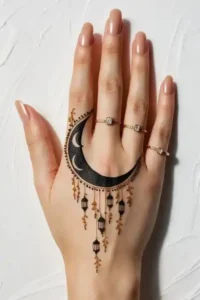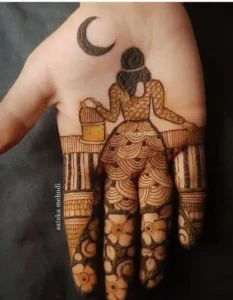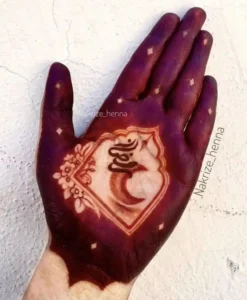Beautiful Mehendi Designs For Ramadan
Easy and Beautiful Mehendi Designs For Ramadan: A Tradition of Blessings and Beauty
Ramadan is a sacred time for Muslims, a month dedicated to fasting, prayer, and reflection. It is a period that not only focuses on spiritual growth but also on community, family, and celebration. One tradition that has become deeply intertwined with the Ramadan celebrations is the application of mehendi (henna). While it may seem like a mere adornment, mehendi during Ramadan holds much more significance than just a beauty ritual.
Mehendi: A Symbol of Joy and Blessings
In many cultures, especially in South Asia and the Middle East, mehendi is seen as a symbol of good fortune, happiness, and spiritual well-being. During Ramadan, applying mehendi is a way to celebrate the joy and blessings of the holy month. It is a form of expressing gratitude for the divine mercy and abundance of life. Just as fasting purifies the soul, mehendi is believed to purify the body, allowing one to connect with the spiritual essence of the season.
A Tradition of Gratitude and Celebration
For many women, mehendi holds cultural and emotional value during Ramadan. It’s a cherished tradition that enhances the joy of Ramadan’s festive moments, especially during Eid celebrations. The application of intricate henna designs serves as a way to mark the end of the fasting month, giving it an extra layer of celebration and festivity. Whether it’s a simple design or an elaborate pattern, mehendi acts as a reminder of the spiritual renewal and strength that Ramadan brings.
In some regions, mehendi is seen as a blessing that accompanies new beginnings. As Ramadan is a time of spiritual reflection and renewal, the art of mehendi symbolizes a fresh start—a chance to purify one’s heart, thoughts, and actions. This act of beautifying oneself with mehendi is often done with a prayerful heart, asking for God’s blessings and mercy in the coming year.
The Social and Cultural Aspect of Mehendi
Beyond its symbolic value, mehendi also plays a crucial role in the social fabric of Ramadan. It’s a communal activity, often shared with friends and family, that fosters bonding and unity. Applying mehendi together before Eid, for example, is a beloved ritual among women and young girls. It strengthens relationships and allows people to come together in celebration, joy, and mutual support during a time of reflection.
Moreover, the process of applying and wearing mehendi during Ramadan allows individuals to express their cultural identity. Each design—whether floral, geometric, or featuring traditional motifs like the moon and stars—connects the wearer to their heritage and personal history. It is a form of storytelling through art, where the hands become a canvas that conveys pride in one’s faith, culture, and traditions.
Conclusion: Mehendi as a Sacred Ritual During Ramadan
Mehendi during Ramadan is more than just a decorative practice. It is a beautiful expression of joy, gratitude, and spiritual renewal. The tradition is a way to connect with both the community and the divine, reminding everyone of the blessings of Ramadan while celebrating the upcoming Eid festivities. Whether applied with intricate care or in simpler designs, mehendi carries deep cultural and spiritual significance, making it an integral part of the Ramadan experience for many.
Video Credit: Muskan Mehendi Art



















